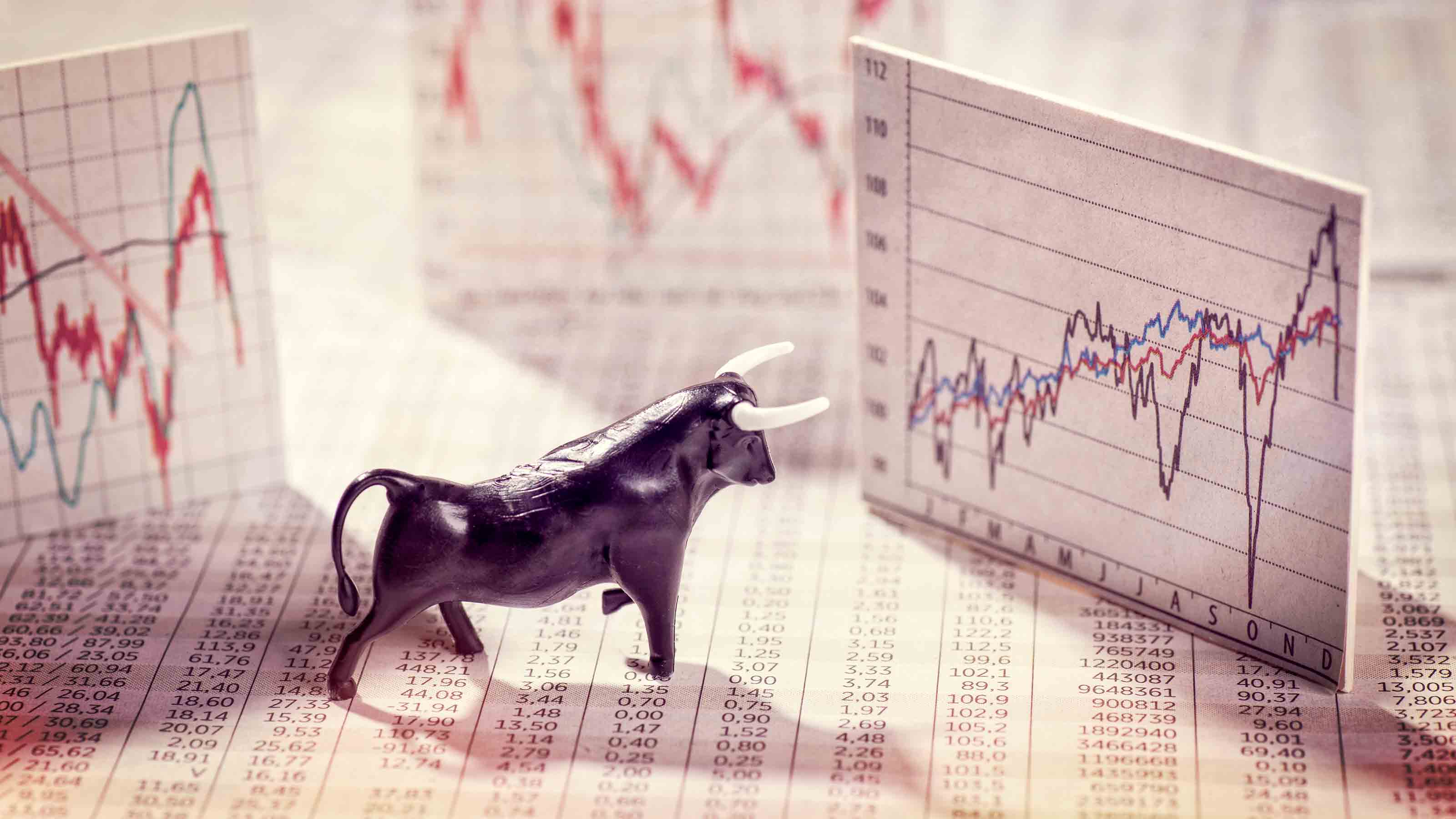The Bull Case for the Second Half of 2025
This strategist sees a volatile market segueing to a strong close this year.


Michael Arone is chief investment strategist for State Street Global Advisors. He recently shared his "refreshingly optimistic" take on the markets — and where investors should put their money now — with Kiplinger Personal Finance Magazine .
We very nearly got a bear market in early April, and we did in the indexes for small-company stocks and Nasdaq. What’s your outlook for the second half of 2025?
Arone: I have a refreshingly optimistic outlook that might be different from some of the other conversations you’re having.
From just $107.88 $24.99 for Kiplinger Personal Finance
Become a smarter, better informed investor. Subscribe from just $107.88 $24.99, plus get up to 4 Special Issues

Sign up for Kiplinger’s Free Newsletters
Profit and prosper with the best of expert advice on investing, taxes, retirement, personal finance and more - straight to your e-mail.
Profit and prosper with the best of expert advice - straight to your e-mail.
I believe the second half will feature continued volatility in response to persistent policy uncertainty, but I believe that we’re at a turning point for markets. We’ll begin to see a transition from some of the more challenging parts of the Trump policy agenda — tariffs and immigration — to the pro-growth tax cuts and deregulation parts.
That will help boost markets late in the year and potentially set up a strong close this year and continued strength early next as both Democrats and Republicans turn toward midterm elections in 2026.
Do you have a year-end price target in mind for the S&P 500?
Arone: I don’t typically have a target. From my perspective, I just think that some of this anxiety about the Trump administration agenda will begin to cool, and markets will rally. What’s interesting is that the Obama, Trump 1.0 and Biden administrations all saw volatility in the first 100 days.
You can argue that this time has been different in terms of its frenetic pace and aggressiveness. But each one of those presidents suffered early bouts of volatility, and each one went on to have a solid first-year stock market performance. It wouldn’t surprise me if that happens again.
Do you think that the recent downturn has bottomed?
Arone: I expect volatility to remain high, but we may have reached a floor for equities and a ceiling for bond yields.
History shows that 85% of the time, between four weeks and four months after a market bottom, we retest the lows. That didn’t happen in 2018 or 2020, and it may not happen here.
Whether we’ve hit the exact bottom remains a question mark. But I do think that we’re pivoting toward pro-growth policy components and more toward trade resolution than trade war. This will help sentiment and boost markets — we may have seen the bottom.
Also, what’s important is that what has happened here is somewhat healthy.
One of my concerns early in the year was that sentiment was too euphoric. Not that long ago, in mid-February, the S&P 500 hit its third all-time high for the year. But price-earnings multiples were stretched, on par with previous peaks in the market. There was no margin for error at those price levels. What’s transpired, although painful, is likely healthy.
The market’s P/E level came down to near its five-year average. The bar is now lowered enough on corporate earnings estimates that I wouldn’t be surprised if companies easily step over it. That gives us a better launching point for gains in the second half.
And the Federal Reserve will be cutting rates as inflation falls; that will be an additional catalyst. Chairman Powell has room to cut rates — he’s just waiting on greater clarity.
Why do you see inflation falling, given the tariff situation?
Arone: Early last year, inflation came in hotter than expected. But those numbers are rolling off, and year-over-year numbers will be lower.
We also know that owners’ equivalent rent (a measure of housing costs) accounts for roughly 30% of the consumer price index, and that’s beginning to improve.
On the tariff front, we see a lot of expectations that inflation will be higher. But that wasn’t true in 2018, and it may not be true this time around. Tariffs are a one-time inflationary risk, and I’m not sure we’ll even get that. I expect that over the next few months, the Trump administration will be able to negotiate with more trading partners in addition to the United Kingdom, such as Japan and India.
The administration is making a lot of noise about being willing to de-escalate with China, and China may be willing to meet us halfway.
Is an independent Fed important for the market?
Arone: It’s not unusual for a president to pressure the Fed chair to lower rates.
Reagan did it to Volcker, Nixon to Burns. Now, it’s front and center on the 24/7 news cycle, where some of this stuff gets exaggerated.
Trump will have the opportunity to name a new Fed chair in 2026. If anything, I think monetary policy is more complicated now. If Powell cuts rates, it looks like he’s giving in. But the Fed doesn’t want to cause a recession or unemployment by delaying, either.
What’s your take on the economy?
Arone: The market is transitioning to a slower-growth environment.
The U.S. economy was growing at nearly a 3% rate last year. Now it looks like the consensus forecast is less than 2% for this year, in rough numbers.
That transition has been bumpy. As more clarity comes on monetary policy, economic data and Trump administration policy, it should provide a more solid foundation for the stock market to rally. I’m not suggesting that any of these numbers — on economic growth or corporate earnings growth — are recessionary, just transitioning to slower growth.
What’s the risk to your outlook?
Arone: It’s all predicated on the idea that we don’t enter a recession. If, for some reason, we did — I don’t foresee that, but if we did — then my bullishness is misplaced.
I expect the economy to expand at a slower rate and corporate earnings to grow at a lower level than first estimated. Lighter inflation, an easier Fed, and pro-growth components of the Trump administration’s agenda will be enough to push markets higher.
Where should investors put their money now?
Arone: Many investors are now getting cautious; we see it in exchange-traded fund flows and in sentiment and positioning surveys of individuals and asset managers. There’s a rush toward defensive investments, but it’s almost as if they’re rushing to safe havens after the volatility has already been experienced.
For me, it makes sense to invest in more service-oriented businesses — companies that are less impacted by trade friction than manufacturers are.
That means health care services and insurance companies, for example, versus automakers and semiconductor manufacturers.
If volatility continues, total returns may be lower, and more of those returns will come from dividend income. Dividend payers and dividend growers are important portfolio components. Over the past decade, U.S. investors have been sizably underweight in non-U.S. stocks. If, in fact, there is some irreparable damage to U.S. standing in the world, and the dollar remains under pressure, those non-U.S. stocks will become more attractive.
Finally, I recognize the limitations of my crystal ball. It’s as murky as anyone else’s. So in a diversified portfolio, it’s important to have some hedges.
Gold, alternative strategies that have a low correlation to stocks and bonds, and some real assets, including real estate, commodities and natural resources — these are all helpful hedges in these volatile times.
Note: This item first appeared in Kiplinger Personal Finance Magazine, a monthly, trustworthy source of advice and guidance. Subscribe to help you make more money and keep more of the money you make here.
Related
Profit and prosper with the best of Kiplinger's advice on investing, taxes, retirement, personal finance and much more. Delivered daily. Enter your email in the box and click Sign Me Up.

Anne Kates Smith brings Wall Street to Main Street, with decades of experience covering investments and personal finance for real people trying to navigate fast-changing markets, preserve financial security or plan for the future. She oversees the magazine's investing coverage, authors Kiplinger’s biannual stock-market outlooks and writes the "Your Mind and Your Money" column, a take on behavioral finance and how investors can get out of their own way. Smith began her journalism career as a writer and columnist for USA Today. Prior to joining Kiplinger, she was a senior editor at U.S. News & World Report and a contributing columnist for TheStreet. Smith is a graduate of St. John's College in Annapolis, Md., the third-oldest college in America.
-
 December Fed Meeting: Live Updates and Commentary
December Fed Meeting: Live Updates and CommentaryThe December Fed meeting is one of the last key economic events of 2025, with Wall Street closely watching what Chair Powell & Co. will do about interest rates.
-
 This Is Why Investors Shouldn't Romanticize Bitcoin
This Is Why Investors Shouldn't Romanticize BitcoinInvestors should treat bitcoin as the high-risk asset it is. A look at the data indicates a small portfolio allocation for most investors would be the safest.
-
 I'm a Federal Benefits Pro: I Answer These 2 Questions a Lot
I'm a Federal Benefits Pro: I Answer These 2 Questions a LotMany federal employees ask about rolling a TSP into an IRA and parsing options for survivor benefits, both especially critical topics.
-
 December Fed Meeting: Live Updates and Commentary
December Fed Meeting: Live Updates and CommentaryThe December Fed meeting is one of the last key economic events of 2025, with Wall Street closely watching what Chair Powell & Co. will do about interest rates.
-
 Why Investors Shouldn't Romanticize Bitcoin, From a Financial Planner
Why Investors Shouldn't Romanticize Bitcoin, From a Financial PlannerInvestors should treat bitcoin as the high-risk asset it is. A look at the data indicates a small portfolio allocation for most investors would be the safest.
-
 I'm a Financial Pro Focused on Federal Benefits: These Are the 2 Questions I Answer a Lot
I'm a Financial Pro Focused on Federal Benefits: These Are the 2 Questions I Answer a LotMany federal employees ask about rolling a TSP into an IRA and parsing options for survivor benefits, both especially critical topics.
-
 Private Credit Can Be a Resilient Income Strategy for a Volatile Market: A Guide for Financial Advisers
Private Credit Can Be a Resilient Income Strategy for a Volatile Market: A Guide for Financial AdvisersAdvisers are increasingly turning to private credit such as asset-based and real estate lending for elevated yields and protection backed by tangible assets.
-
 5 RMD Mistakes That Could Cost You Big-Time: Even Seasoned Retirees Slip Up
5 RMD Mistakes That Could Cost You Big-Time: Even Seasoned Retirees Slip UpThe five biggest RMD mistakes retirees make show that tax-smart retirement planning should start well before you hit the age your first RMD is due.
-
 I'm a Wealth Adviser: My 4 Guiding Principles Could Help You Plan for Retirement Whether You Have $10,000 or $10 Million
I'm a Wealth Adviser: My 4 Guiding Principles Could Help You Plan for Retirement Whether You Have $10,000 or $10 MillionRegardless of your net worth, you deserve a detailed retirement plan backed by a solid understanding of your finances.
-
 A Retirement Triple Play: These 3 Tax Breaks Could Lower Your 2026 Bill
A Retirement Triple Play: These 3 Tax Breaks Could Lower Your 2026 BillGood news for older taxpayers: Standard deductions are higher, there's a temporary 'bonus deduction' for older folks, and income thresholds have been raised.
-
 If You're Retired or Soon-to-Be Retired, You Won't Want to Miss Out on These 3 OBBB Tax Breaks
If You're Retired or Soon-to-Be Retired, You Won't Want to Miss Out on These 3 OBBB Tax BreaksThe OBBB offers some tax advantages that are particularly beneficial for retirees and near-retirees. But they're available for only a limited time.